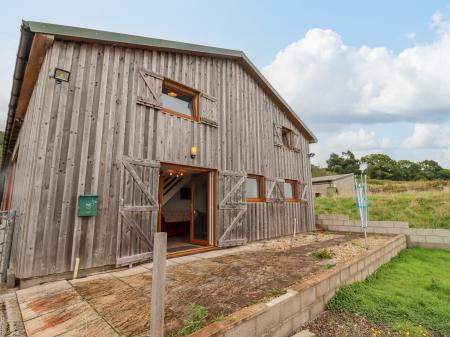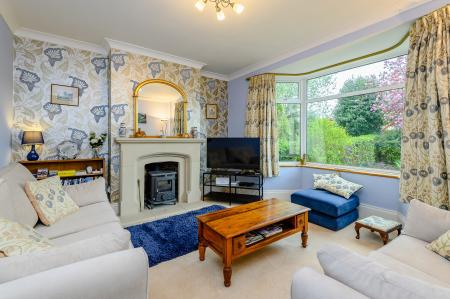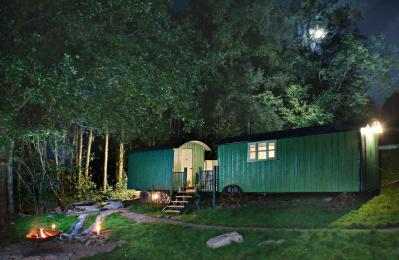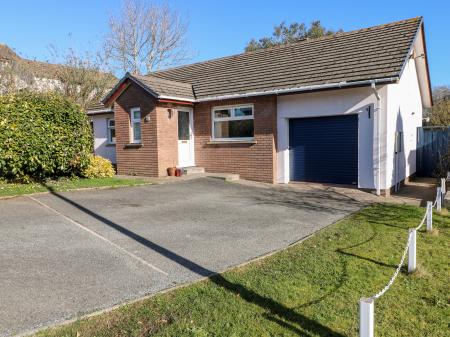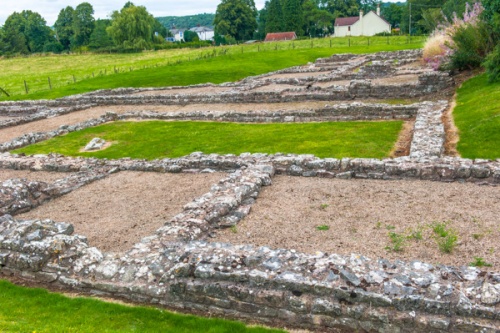
History
Caerwent was the capital of the Silures, the most important and powerful British tribe of south Wales. The town was founded in the late 1st century beside the main road from Glevum (Gloucester) to the Roman fort at Isca (Caerleon), and was the first true town in Wales.
Caerwent grew to have a population of roughly 3,000 inhabitants at the height of its prosperity in the 2nd century. Caerwent had all the facilities you might expect in a 'civilised' Roman town; a combination forum and basilica complex, public baths, a temple, and town houses, each with their own central heating system via hypocausts.
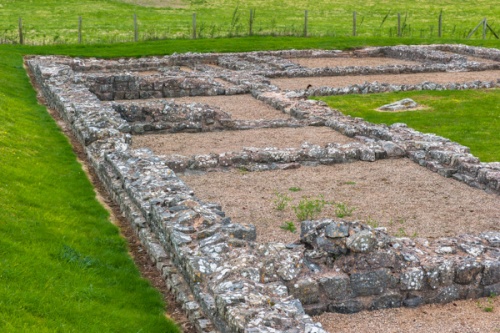
Caerwent was essentially a miniature version of Rome. There does not appear to have been any military presence in Caerwent; the town must have been entirely self-governing. The new town was slow to expand, but it seems likely that the population was swelled with retired veterans of the 2nd Legion based at Caerleon.
The town declined gradually from the 2nd century, and by the late 4th century many of the houses were falling apart and the basilica was used as a blacksmith's workshop.
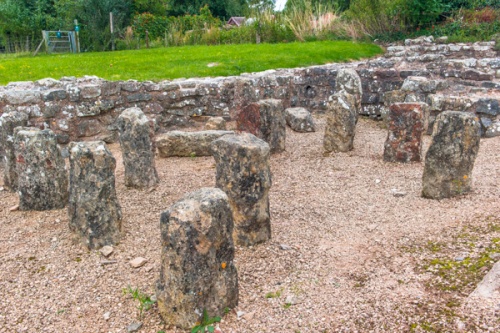
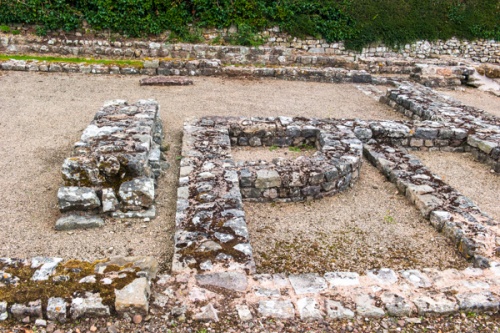
Town Walls
Caerwent has the best-preserved Roman town walls in Britain, with over a mile of the original walls remaining. The walls were begun in the late 2nd century outside an earlier system of earthwork banks and double-ditches.
A series of polygonal towers were added to the north and walls in the 4th century, suggesting that this was a period of greater social upheaval when protection was more important - and that the town was wealthy enough to build them. The towers were hollow, with a timber platform for archers.
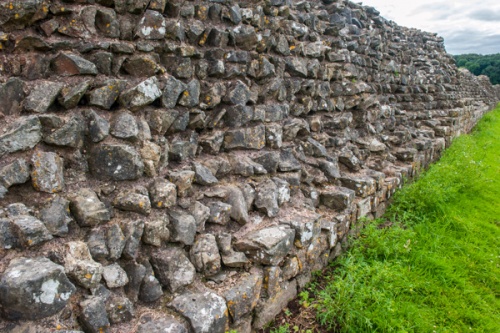
There are main gates at the east and west ends of the town. These were originally made of timber but in the late 3rd century were rebuilt in masonry.
The south wall still stands to 17 feet high, but was originally twice that height. It could be entered only by a narrow single-arched gateway, now blocked.
In the south-east corner of the walls stands a low motte, or mound of earth, erected by the Normans in the 11th century. The motte would have been topped with a timber palisade, and protected by the walls on 2 sides and by the old double-ditch on the other two sides.
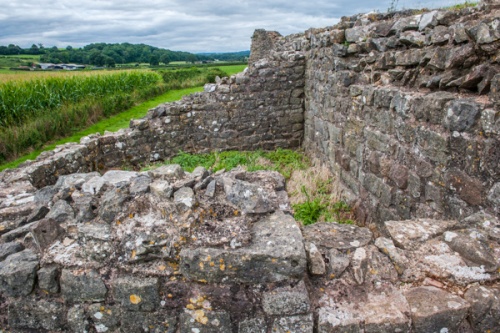
Inside the town walls the Romans laid out streets on a traditional grid system. The original town houses would have been made of timber atop stone foundations, but these were later rebuilt in stone.
One large house in particular is worth noting; it had 2 courtyards, with ranges of service rooms and living quarters. The living area had brightly painted walls and mosaic floors, heated by a hypocaust system. You can still see remains of the hypocaust in place.
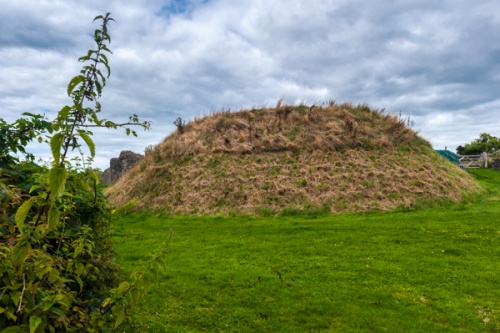
Forum and Basilica
This pair of buildings stands at the very centre of the town. The forum was an open market place, with colonnaded walks shading shops, offices, and taverns around the edge, while the paved central area provided space for market stalls.
The basilica occupied one side of the forum. This building was huge, measuring 260 feet long and 182 feet wide. The basilica was used for civic events and ceremonial functions.
It must have dwarfed the surrounding buildings, standing roughly 65 feet high. At either end of the main basilica hall you can see small chambers used by magistrates for hearing court cases.
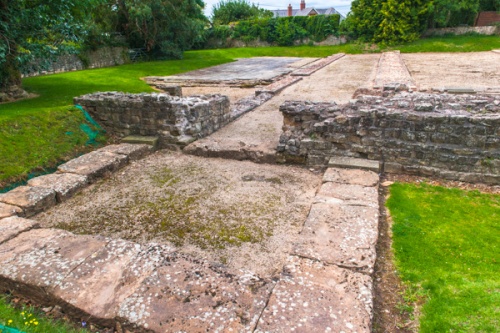
Temple
Very close to the basilica is the substantial remain of a temple complex. This was built about AD 330, late in the life of Caerwent town.
We do not know what deity or deities were worshipped here. The time period suggests that it was probably not related to Christian worship, though by this time Christianity was at least nominally the official religion of the Roman Empire.
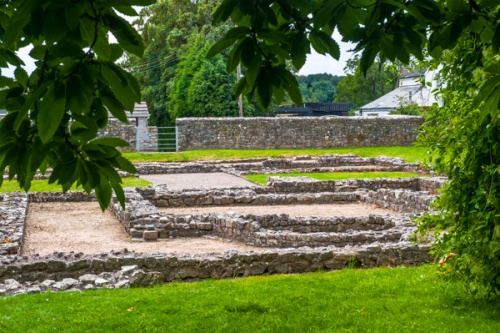
The temple was entered through a long hall facing the street, with a passage giving onto a sacred courtyard enclosure. From the courtyard you pass to a walkway around a square inner sanctuary, the most sacred part of the site, with a niche at the rear for sacred objects.
The temple layout is extremely clear from the surviving foundations. This was a very large complex, and is still impressive today even without its walls and roof!
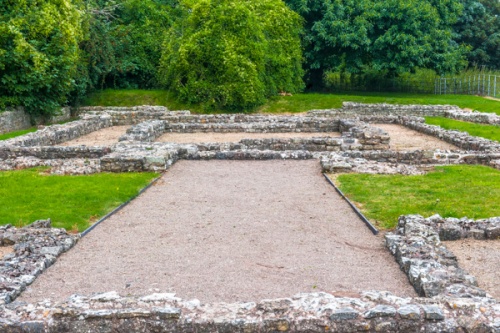
Visiting
CADW describe the Caerwent site as an archaeologist's paradise. I'd say that even if you are not an archaeologist of even an avid student of Roman history, Caerwent cannot help but impress you. There is free parking at West Gate barns, just inside the west edge of the town walls.
From there you can follow the course of the Roman town walls as they loop south and then east. You can opt to walk on top of the walls or at the base.
I personally enjoyed walking at the base of the walls, because you can more easily see just how high, and well built, the walls and mural towers are.
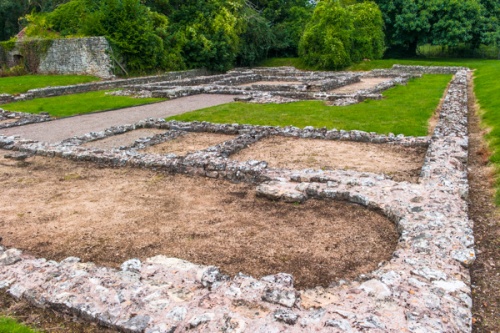
The Norman motte in the south east corner of the site looks rather odd stuck into the corner of the Roman walls, but it does drive home just how well-built the walls were. When the Normans arrived the 700 year-old walls must have seemed a godsend for establishing a powerful military presence.
The northern section of the town walls is far less impressive than the south. I'd go so far as to say you could skip it entirely and simply explore the sites within the town, and that in itself will take plenty of time as there is so much to see.
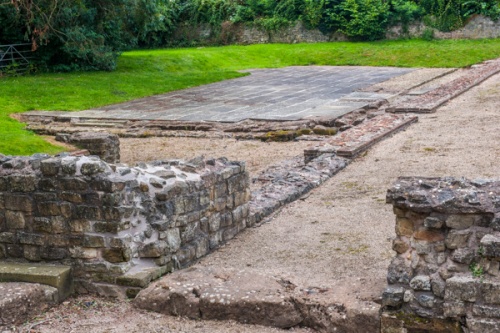
I was extremely impressed with the temple; it is so clearly laid out that you can easily get a sense of the different areas of the building were meant to function. It would have been an amazingly awe-inspiring experience to progress through the outer courtyard and into the most sacred inner part of the temple.
Caerwent is one of the most impressive Roman sites in Britain; a truly amazing collection of remains that really give visitors a sense of how people lived, worked, and worshipped here so many years ago.
 We've 'tagged' this attraction information to help you find related historic attractions and learn more about major time periods mentioned.
We've 'tagged' this attraction information to help you find related historic attractions and learn more about major time periods mentioned.